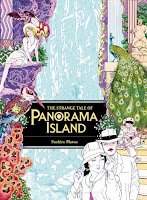 Creator: Suehiro Maruo
Creator: Suehiro Maruo
Original story: Edogawa Rampo
U.S. publisher: Last Gasp
ISBN: 9780867197778
Released: July 2013
Original release: 2008
I have been looking forward to Suehiro Maruo’s The Strange Tale of Panorama Island with great anticipation ever since the license was announced by Last Gasp in 2009. After years of delay, the manga was finally released in English in 2013 as a gorgeous, large-format hardcover. Maruo’s The Strange Tale of Panorama Island was originally released in Japan in 2008. The manga is an adaptation of the renowned author Edogawa Rampo’s novella Strange Tale of Panorama Island which was initially serialized between 1926 and 1927. (Coincidentally, the novella was also released in English for the first time in 2013.) After reading Edogawa’s Strange Tale of Panorama Island, I couldn’t think of a more perfect artist to adapt his work than Maruo. I didn’t think it was possible, but I was somehow even more excited for the release of Maruo’s The Strange Tale of Panorama Island after reading the original.
As the Taishō Era draws to a close, failed novelist Hirosuke Hitomi finds himself behind in his rent and the prospect of his work being published slim. His latest novel, The Tale of RA, is a utopian fantasy which allows him to dream about what he would do if he had limitless riches. His editor encourages him to write about something closer to his real life instead. Months later Hitomi is confronted with an almost impossible opportunity that could be straight out of his novel. His former classmate Genzaburō Komoda, to whom he bears an uncanny resemblance, has unexpectedly died, leaving behind an immense fortune. Devising an outlandish scheme to take Komoda’s place and take control of his wealth, Hitomi plans on devoting all of it to the creation of a hedonistic paradise, Panorama Island. The plan proceeds surprisingly well, but there is still one person who could reveal Hitomi as a fake–Komoda’s wife.
I have been an admirer of Maruo’s work ever since I first discovered it. At this point, only two other volumes of Maruo’s manga have been published in English: Mr. Arashi’s Amazing Freak Show and Ultra-Gash Inferno. As I have come to expect, Maruo’s illustrations in The Strange Tale of Panorama Island are exquisite. With its sensuality, eroticism, and shades of the macabre and grotesque, Maruo’s artwork is ideally suited to Rampo’s story. Even in all of its beauty, The Strange Tale of Panorama Island has an ominous and vaguely disconcerting atmosphere that is extraordinarily effective in setting the mood of the work. Hitomi’s paranoia and madness is captured in ink for all to see. And then there’s the island itself–Maruo’s portrayal is breathtaking with stunning reveals, careful attention to detail, and beautiful design and perspective work. The art in The Strange Tale of Panorama Island is simply marvelous.
Maruo’s The Strange Tale of Panorama Island is a superb adaptation and a spectacular work in its own right. The manga is not at all a slavishly executed interpretation. While staying true to Rampo’s original, Maruo allows himself to put his own touches and flourishes on the story. The ending is admittedly abrupt and somewhat disorienting (this was true of the novella as well), but what comes before more than makes up for this weakness. In part, Maruo’s The Strange Tale of Panorama Island is about the end of one era and the beginning of the next, the start of a new life after the old has been discarded. Hitomi begins as a penniless author only to become intoxicated with his own ideas as he slips into a life of debauchery and excess. Maruo’s vision of his descent is both captivating and unsettling, alluring and abhorrent. In the end, I am absolutely thrilled that The Strange Tale of Panorama Island is finally available in English.
 THE FOUR IMMIGRANTS MANGA: A JAPANESE EXPERIENCE IN SAN FRANCISCO, 1904 – 1924
THE FOUR IMMIGRANTS MANGA: A JAPANESE EXPERIENCE IN SAN FRANCISCO, 1904 – 1924 The Four Immigrants Manga
The Four Immigrants Manga Parasyte
Parasyte Satsuma Gishiden
Satsuma Gishiden Town of Evening Calm, Country of Cherry Blossoms
Town of Evening Calm, Country of Cherry Blossoms BONUS PICK: Phoenix: Civil War
BONUS PICK: Phoenix: Civil War In The Idea of History, author R. G. Collingwood argues that nineteenth-century historians viewed their task in a different spirit than their predecessors. While previous generations of scholars treated history as a simple chain of events, the Romantics wanted to recreate the past through their writings. The Romantic historian, Collingwood explained, “entered sympathetically into the actions which he described; unlike the scientist who studied nature, he did not stand over the facts as mere objects for cognition; on the contrary, he threw himself into them and felt them imaginatively as experiences of his own.”
In The Idea of History, author R. G. Collingwood argues that nineteenth-century historians viewed their task in a different spirit than their predecessors. While previous generations of scholars treated history as a simple chain of events, the Romantics wanted to recreate the past through their writings. The Romantic historian, Collingwood explained, “entered sympathetically into the actions which he described; unlike the scientist who studied nature, he did not stand over the facts as mere objects for cognition; on the contrary, he threw himself into them and felt them imaginatively as experiences of his own.”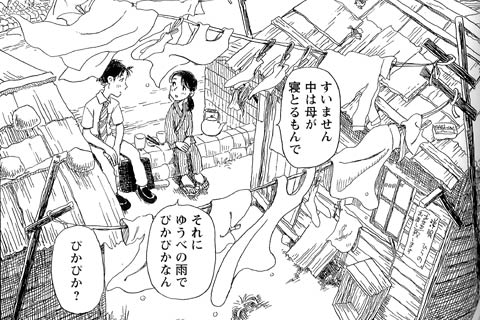
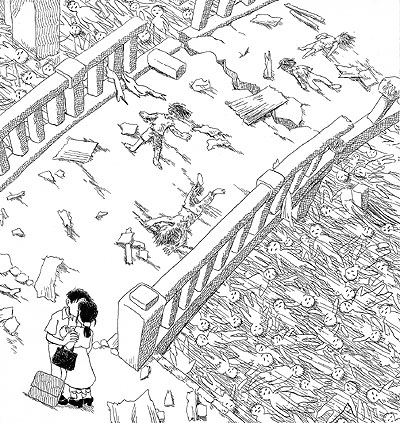
 10. Oishinbo a la Carte
10. Oishinbo a la Carte 




 4. Pluto: Urasawa x Tezuka
4. Pluto: Urasawa x Tezuka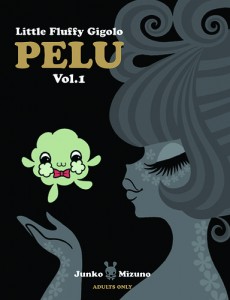
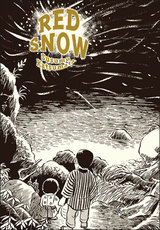

 Poignant — now there’s a word I never imagined I’d be using to describe one of Junko Mizuno’s works, given her fondness for disturbing images and acid-trip plotlines. But Little Fluffy Gigolo Pelu is poignant, a perversely sweet and sad meditation on one small, sheep-like alien’s efforts to find his place in the universe.
Poignant — now there’s a word I never imagined I’d be using to describe one of Junko Mizuno’s works, given her fondness for disturbing images and acid-trip plotlines. But Little Fluffy Gigolo Pelu is poignant, a perversely sweet and sad meditation on one small, sheep-like alien’s efforts to find his place in the universe.